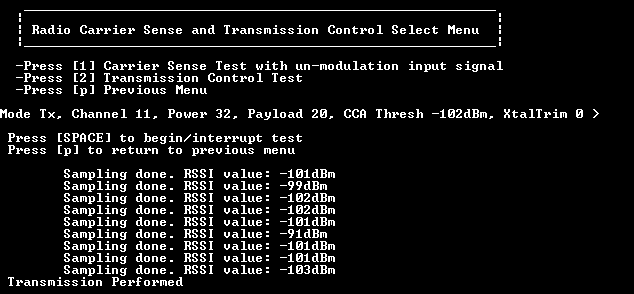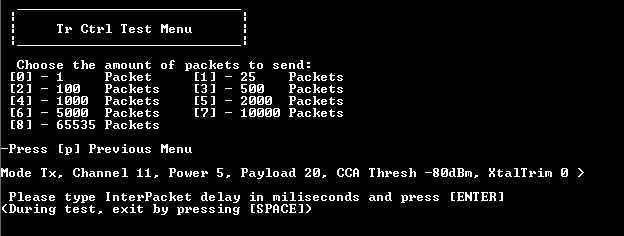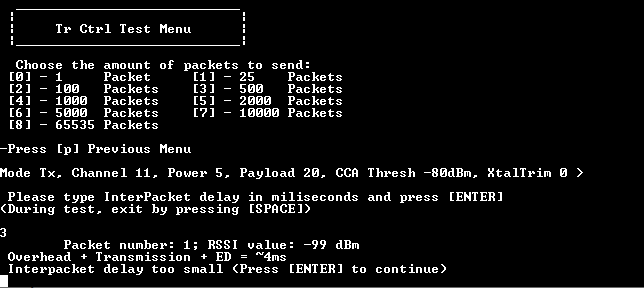Carrier Sense and Transmission Control Select menu
Carrier Sense Test with unmodulated input signal
This test performs a “manual” Clear Channel Assessment procedure. First, an energy request procedure is done to obtain the RSSI on the specified channel. Then, the obtained RSSI is compared against CCA threshold value, which can be manually set by issuing shortcut commands **[l]**and [k].
If the obtained RSSI value for the specified channel is greater than the CCA threshold value, then the channel is considered busy, no transmission is issued on that channel and another energy detect request is started. This is shown in the below figure.
Carrier Sense Test when RSSI is greater than CCA Threshold

However, if the obtained RSSI value for the specified channel is lower than the CCA Threshold value, then the channel is considered as Idle. It indicates that a transmission has occurred and therefore, the test ends. This is shown in in the below figure.
Carrier Sense Test when RSSI is lower than CCA Threshold

Parent topic:Carrier Sense and Transmission Control Select menu
Transmission Control test
The Transmission Control test performs data transmissions over the air using user-specified options.
The data payload is composed from a predefined data buffer that copies as many bytes as the ‘device state payload data length setting’ indicates.
Before any transmission, the test performs an energy detect procedure to obtain the RSSI value of the specified channel. This value is displayed on the side of a message that indicates a message has been sent over the air.
Steps to perform a Transmission Control Test
The figure below illustrates the Transmission Control Test menu.
Transmission Control Test menu

The process to conduct the Transmission Control Test is as follows:
Select the number of packets to be sent.
Specify the inter-packet delay. (Transmission delay between two consecutive packets).
The figure shows this process.
Transmission Control Test execution

This test also calculates an approximation of time needed to perform the Overhead + Transmission + Energy Detect procedure.
If the inter-packet delay has a value lower than the estimation previously calculated, a corresponding message is shown, and the test finishes the execution as shown in the figure below.
Transmission Control Test – Inter-Packet delay error

Parent topic:Transmission Control test
Parent topic:Carrier Sense and Transmission Control Select menu
Parent topic:CLI test description